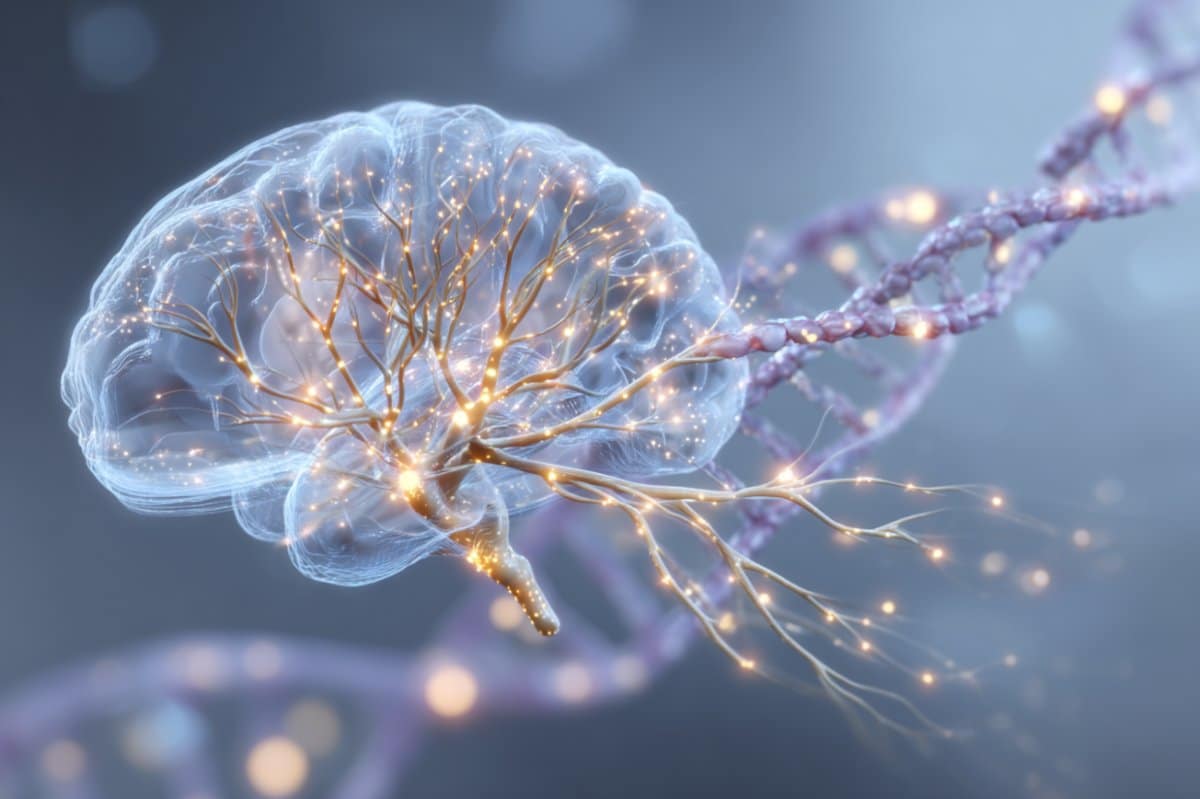Summary: Scientists in Japan have used genetic engineering to make a species of fruit fly perform a courtship ritual it had never done before. By turning on the “fruitless” gene in insulin-producing neurons, they rewired the brains of Drosophila melanogaster to offer regurgitated food to potential mates—a behavior seen in a different species, D. subobscura.
The gene activation caused new neural connections to form between feeding-related neurons and the brain’s courtship center, effectively swapping a singing-based strategy for a gift-based one. The findings show that small-scale rewiring in just a few preexisting neurons can create entirely new behaviors, shedding light on how evolution generates diversity.
Key Facts
- Behavioral Swap: Activating one gene turned singing flies into gift-giving flies.
- Neural Rewiring: The change linked insulin-producing neurons to the courtship center in the brain.
- Evolutionary Insight: Small genetic changes in existing neurons can drive the emergence of new species behaviors.
Source: Nagoya University
Researchers in Japan have genetically transferred a unique courtship behavior from one fruit fly species to another.
By turning on a single gene in insulin-producing neurons, the team successfully made a species of fruit fly (Drosophila melanogaster) perform a gift-giving ritual it had never done before.
The study, published in the journal Science, represents the first example of manipulating a single gene to create new neural connections and transfer behavior between species.
In nature, most male fruit flies court mates by rapidly vibrating their wings to create sound patterns or “courtship songs.” However, Drosophila subobscura has evolved a very different strategy: males regurgitate food and offer it as a gift to females during courtship. This behavior does not exist in closely related species such as D. melanogaster.
These two fruit fly species diverged about 30-35 million years ago. Both have a gene called “fruitless” or “fru” that controls courtship behavior in males, but they use different strategies—one species sings and the other gives gifts.
The researchers found the reason for this difference: in gift-giving flies (D. subobscura) insulin-producing neurons are connected to the courtship control center in the brain, while in singing flies (D. melanogaster) these cells remain disconnected.
“When we activated the fru gene in insulin-producing neurons of singing flies to produce FruM proteins, the cells grew long neural projections and connected to the courtship center in the brain, creating new brain circuits that produce gift-giving behavior in D. melanogaster for the first time,” Dr. Ryoya Tanaka, co-lead author and lecturer at Nagoya University’s Graduate School of Science, explained.
The researchers inserted DNA into D. subobscura embryos to create flies with heat-activated proteins in specific brain cells. They used heat to activate groups of these cells and compared the brains of flies that did and did not regurgitate food.
They identified 16-18 insulin-producing neurons that make the male-specific protein FruM, clustered in a part of the brain called the pars intercerebralis.
“Our findings indicate that the evolution of novel behaviors does not necessarily require the emergence of new neurons; instead, small-scale genetic rewiring in a few preexisting neurons can lead to behavioral diversification and, ultimately, contribute to species differentiation,” Dr. Yusuke Hara, co-lead author from the National Institute of Information and Communications Technology (NICT), noted.
“We’ve shown how we can trace complex behaviors like nuptial gift-giving back to their genetic roots to understand how evolution creates entirely new strategies that help species survive and reproduce,” senior author Dr. Daisuke Yamamoto from NICT said.
The study, “Cross-species implementation of an innate courtship behavior by manipulation of the sex-determinant gene” was published in the journal Science, on August 14, 2025.
It represents the result of collaborative efforts led by Drs. Yusuke Hara and Daisuke Yamamoto at the National Institute of Information and Communications Technology (NICT), in partnership with researchers at Nagoya University.
Funding:
This research was conducted with support from KAKENHI Grant-in-Aid for Scientific Research: “Early-Career Scientists (Project Numbers: 19K16186, 21K15137),” “Scientific Research A (Project Number: 21H04790),” “Transformative Research Areas (A): Hierarchical Bio-Navigation Science (Project Numbers: 22H05650, 24H01433),” and “Scientific Research C (Project Number: 23K05846).”
About this genetics and behavioral neuroscience research news
Author: Merle Naidoo
Source: Nagoya University
Contact: Merle Naidoo – Nagoya University
Image: The image is credited to Neuroscience News
Original Research: Closed access.
“Cross-species implementation of an innate courtship behavior by manipulation of the sex-determinant gene” by Ryoya Tanaka et al. Science
Abstract
Cross-species implementation of an innate courtship behavior by manipulation of the sex-determinant gene
In accepting a courting male, Drosophila subobscura females require nuptial gift giving in which a male gives regurgitated crop contents to her mouth to mouth. No similar behavior is found in D. melanogaster.
By clonal activation of neurons expressing the male-determinant FruM, we identified insulin-like peptide–producing cells (IPCs) and their putative postsynaptic targets, proboscis-innervating motoneurons, as those critical for gift giving.
We demonstrate that loss of FruM from D. subobscura IPCs abrogates neurite extension and gift giving, whereas FruM overexpression in their D. melanogaster counterparts induces overgrowth of neurites that harbor functional synapses, culminating in increased regurgitation.
We suggest that the acquisition of FruM expression by IPCs was a key event occurring in an ancestral D. subobscura that conferred a latent capability to perform nuptial gift giving.
